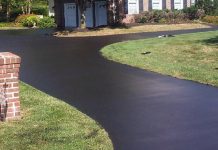Web design isn’t just about making your website look good; it’s also about making it function at its best. In the evolving landscape of the internet, we’ve moved beyond simple, static web pages to dynamic, user-centered experiences that prioritize both aesthetics and usability.
In this blog, we’ll explore the pivotal role that the visual aspects of web design play in optimizing your website’s performance. Discover how a well-designed website not only captures attention but also ensures a seamless and effective user experience.
Aesthetics in Digital Web Design
The evolution of web design has mirrored modern architectural principles, emphasizing minimalism, functionality, and user engagement. This intersection is most apparent in modern architecture websites, which showcase how digital aesthetics have been influenced by contemporary building designs.
These platforms do more than display structures; they offer interactive experiences that blend visual appeal with user interaction, reflecting the clean lines and efficiency of the spaces they represent.
As a result, aesthetic trends in web design have shifted towards sleeker, more efficient layouts that prioritize the user’s journey. This transformation indicates a broader recognition of the importance of design in website performance, with well-designed sites often experiencing higher engagement and conversion rates.
Defining Aesthetic Success in Digital Platforms
When we talk about aesthetically pleasing websites, it’s not just about their looks; it’s about the inviting atmosphere they create, which encourages users to stay and engage. Characteristics that define such sites include a well-balanced color scheme, easy-to-navigate layouts, responsive design, and interactive elements that captivate users.
These aspects are not just about visual pleasure but about creating a seamless and engaging user experience. By examining the top conversion websites, we observe that successful design integration involves marrying aesthetics with functionality. These websites serve as prime examples, illustrating how strategic design choices can lead to improved user interactions and, ultimately, more conversions.
Impact of Mobile-First Design
The mobile-first design philosophy has significantly influenced web aesthetics and functionality. As mobile usage surpasses desktop, designing for smaller screens has become a priority. This approach doesn’t just shrink content to fit a smaller display; it involves rethinking the entire user experience to ensure it’s as intuitive and engaging on a mobile device as it is on a larger screen.
This shift has led to cleaner, faster-loading sites with a focus on essential content, ultimately affecting how users perceive and interact with digital platforms.
Future Trends in Web Aesthetics
Looking ahead, web aesthetics are poised to become more interactive and immersive. We might see a rise in the use of virtual and augmented reality, offering users a more engaging and hands-on experience.
Additionally, as artificial intelligence becomes more integrated into design tools, personalized user experiences will likely become the norm, with websites adapting in real-time to user preferences and behaviors. These trends will further blur the lines between digital and physical realms, creating more dynamic, responsive, and personalized web experiences.
In Summary
Achieving aesthetic success on digital platforms involves crafting spaces that are visually striking, highly functional, and deeply engaging. As the impact of mobile-first design reshapes user expectations and future trends promise even more immersive experiences, the landscape of web aesthetics is in constant flux.
For designers and developers, staying abreast of these shifts and embracing them is crucial for building websites that not only meet but exceed the dynamic needs and preferences of users, ensuring high performance and success in an ever-evolving digital world.





































